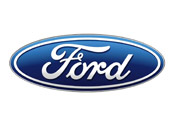How Much Does 1995 Ford E-150 Car Insurance Cost?
Having to pay for overpriced Ford E-150 insurance can drain your checking account and force you to prioritize other expenses. Comparing price quotes is free, only takes a few minutes, and is a good way to lower your monthly bill.
Many insurance companies vie for your insurance dollar, and because of this it can be hard to compare auto insurance companies and get the definite lowest rate
Auto Insurance Prices
Performing a rate comparison can take time and effort if you don’t know the best way to get rate quotes. You can waste a few hours (or days) discussing policy coverages with insurance companies in your area, or you can stay home and use online quotes to get prices fast.
All the larger companies participate in an industry program that allows shoppers to submit one quote, and each company then gives them pricing based on the submitted data. This prevents consumers from doing quote requests to each individual auto insurance company.
To use this form to compare 1995 Ford E-150 insurance rates click to open in new window.
The single downside to using this type of form is that consumers can’t choose which insurance companies you want to price. So if you want to choose from a list of companies for rate comparison, we have a listing of auto insurance companies in your area. Click to view list.
It’s up to you which method you use, but make sure you use apples-to-apples information on every quote. If you compare mixed coverages then you won’t be able to determine which rate is truly the best. Slightly different limits may result in large price differences. Just keep in mind that having more price comparisons will enable you to find the best rates.
Tailor your coverage to you
When it comes to buying the best auto insurance coverage for your vehicles, there isn’t really a perfect coverage plan. Coverage needs to be tailored to your specific needs so your insurance should reflect that These are some specific questions can help discover if your situation will benefit from professional help.
- What is covered by UM/UIM coverage?
- Can I rate high risk drivers on liability-only vehicles?
- Is my trailer covered?
- Why am I required to buy high-risk coverage?
- Does my insurance cover my expensive audio equipment?
- Does my policy cover my teen driver if they drive my company car?
If you don’t know the answers to these questions, you might consider talking to an agent. To find lower rates from a local agent, complete this form or click here for a list of auto insurance companies in your area.
Auto insurance coverage information
Knowing the specifics of your insurance policy can help you determine the best coverages and proper limits and deductibles. Policy terminology can be ambiguous and coverage can change by endorsement. Listed below are typical coverages offered by insurance companies.
Liability
This can cover damage that occurs to other people or property by causing an accident. This coverage protects you from legal claims by others, and does not provide coverage for your own vehicle damage or injuries.
Split limit liability has three limits of coverage: bodily injury for each person injured, bodily injury for the entire accident and a property damage limit. You might see liability limits of 25/50/25 which means a $25,000 limit per person for injuries, a per accident bodily injury limit of $50,000, and a total limit of $25,000 for damage to vehicles and property. Occasionally you may see a combined limit which provides one coverage limit without having the split limit caps.
Liability coverage protects against things like repair costs for stationary objects, bail bonds, legal defense fees, attorney fees and medical services. How much liability should you purchase? That is a personal decision, but buy higher limits if possible.
Uninsured and underinsured coverage
Your UM/UIM coverage provides protection from other drivers when they either are underinsured or have no liability coverage at all. This coverage pays for hospital bills for your injuries as well as your vehicle’s damage.
Since many drivers carry very low liability coverage limits, their limits can quickly be used up. This is the reason having UM/UIM coverage is important protection for you and your family. Most of the time these limits are identical to your policy’s liability coverage.
Comprehensive coverages
This coverage pays to fix your vehicle from damage that is not covered by collision coverage. A deductible will apply and then insurance will cover the rest of the damage.
Comprehensive coverage pays for claims like damage from getting keyed, damage from flooding, vandalism and hitting a bird. The maximum amount you’ll receive from a claim is the cash value of the vehicle, so if the vehicle’s value is low consider dropping full coverage.
Collision coverage
Collision coverage pays to fix your vehicle from damage resulting from a collision with a stationary object or other vehicle. You first must pay a deductible and then insurance will cover the remainder.
Collision insurance covers things such as rolling your car, sustaining damage from a pot hole, colliding with a tree, crashing into a building and hitting a mailbox. This coverage can be expensive, so consider removing coverage from older vehicles. You can also choose a higher deductible to save money on collision insurance.
Coverage for medical payments
Medical payments and Personal Injury Protection insurance reimburse you for immediate expenses for things like chiropractic care, ambulance fees, X-ray expenses, EMT expenses and pain medications. They are often used to fill the gap from your health insurance plan or if there is no health insurance coverage. Medical payments and PIP cover both the driver and occupants as well as any family member struck as a pedestrian. Personal injury protection coverage is not universally available and gives slightly broader coverage than med pay

